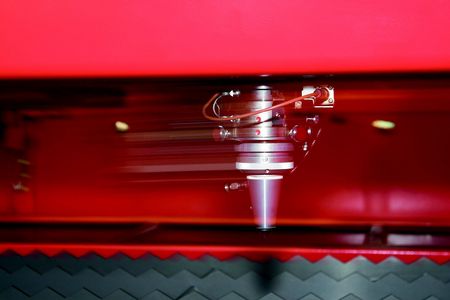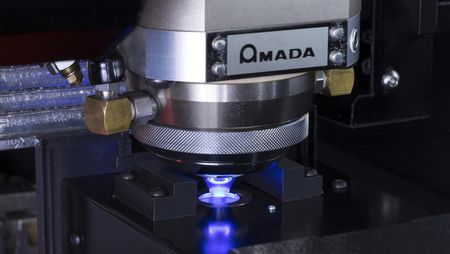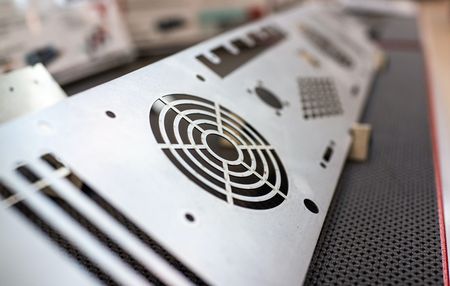For a long time, laser sources have been used for metal processing: primarily for cutting, but also for welding, marking, and many other treatments. The term Laser is now part of the common lexicon because it is suitable for very different uses and far from the industrial ecosystem: it is used to measure distances in a very precise way, has various uses in the medical field (think about ophthalmology), is used for the transport of information via fiber and in many other cases, including those of cutting - but also of welding and micro-drilling - of materials in the production process.
Simplifying, the laser is a device that generates beams of electromagnetic radiation with specifications of consistency and monochromatic, as well as very high power. In the industrial world, the electromagnetic radiation of the beam transmits energy to the component on which it is being worked, resulting in a very high increase in temperature that causes melting and vaporization.

Types of lasers and their applications
Very interesting, regarding the laser cutting activities, is the classification of the lasers themselves, which is based on the active material used. Following this classification we find:
Solid-state lasers, typically based on crystal or ion-doped glass.
CO2 lasers, which can be pure or in a mixture: this category includes the well-known CO2 sources, which are based on a laser mixture, can reach very high powers and whose efficiency is higher than solid state lasers. It is a very common type of laser and is often associated with the processing of wood, textiles, plastics, metals, leather and much more. It is characterized by a good cutting quality even on thick sheets. AMADA offers on the market a whole range of products for laser cutting of metals based on CO2 sources.

Fiber lasers. They produce the laser beam and amplify it by exploiting as an active medium the core of an optical fiber. The fiber laser is considered an optimal solution for sheet metal processing: on the one hand this depends on the excellent quality of the beam, but also on the higher efficiency compared to alternative technologies. The technology in question can be used to handle reflective metals such as copper, is extremely fast and, having few moving parts, requires minimal maintenance. The AMADA range of laser cutting machines with fiber sources is extremely rich and versatile and is characterized by the proprietary fiber generator, the highest standards of reliability and unparalleled cutting performance.
Laser cutting, a pillar of sheet metal processing
Among all the laser activities in manufacturing, cutting is undoubtedly the most common and frequent one due to obvious benefits ranging from precision to repeatability, up to a considerable speed and a TCO (total cost of ownership) content. Laser cutting can boast an extraordinary level of precision, which makes it also suitable for operations on components less than a millimeter.
The process involves the emission of the beam, appropriately focused in a spot, on the cutting area, resulting in melting and vaporization of the metal area. The molten material is moved away by a stream of coaxial gas to the laser beam, so as to create the characteristic key hole that is the real cut. The machining mechanism can be continuous or pulsed: in the latter case, the cut is made by overlapping millimeter grooves placed side by side.
Regardless of the technology adopted, laser cutting machines are composed of a cutting head, a system of axes that allows the head to flow freely, a system of shielding and protection, and numerical control. The machines can operate individually, but combined and multifunctional solutions are also available: among these, the AMADA EML-AJ system combines in a single frame a 30-ton electric punching unit with automatic tool changer and a laser cutting unit with a proprietary 3 kW fiber source, to accelerate processes and ensure extraordinary results even in complex processes.

The benefits of laser cutting: from speed to precision
There are several reasons why laser technology has become a mainstay of sheet metal processing. Here are some of them:
Highest quality, extreme precision
The results can be literally perfect: the cut is clean, free of burrs and deformations, as well as presenting a very high geometric perfection. No further finishing is required.
Time-saving
Cutting speed is a native strength of laser cutting machines, with obvious differences between one model and another.

Versatility
You can work with a variety of materials, thicknesses and achieve extremely complex geometries without sacrificing performance.
Reduced consumption
The fiber laser has extremely low consumption, both during standby and processing.
.